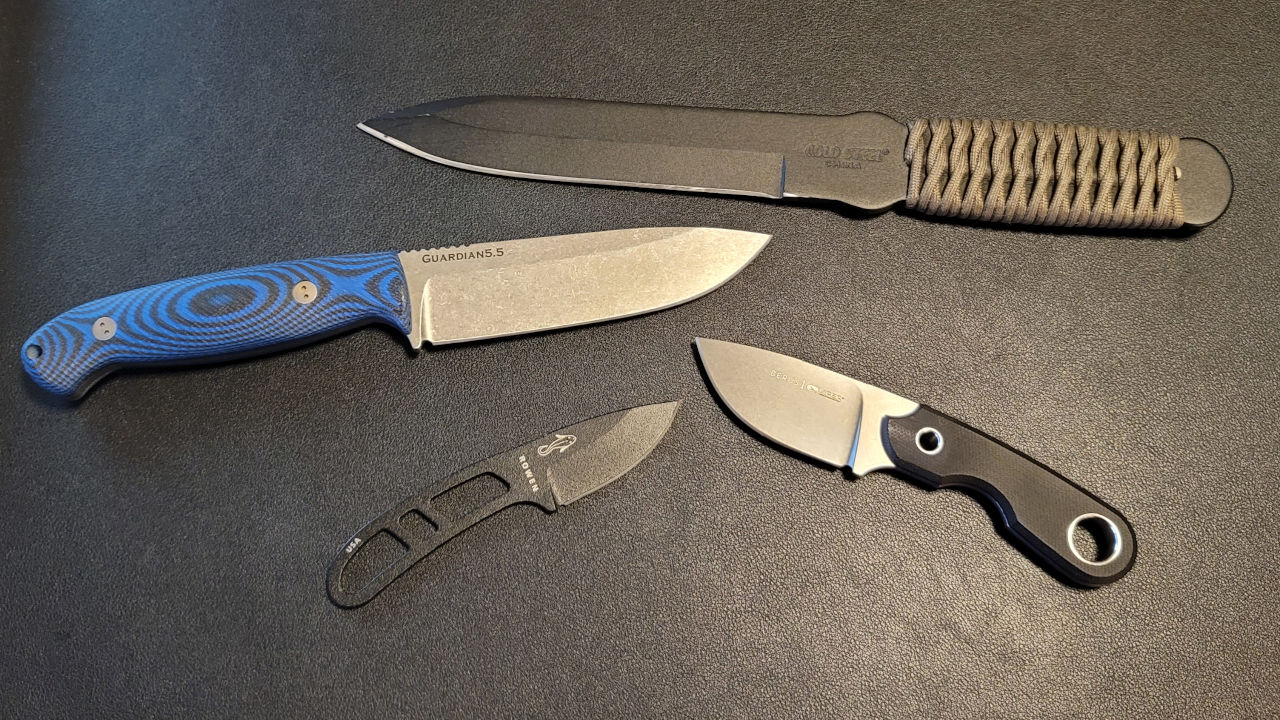The short answer to this popular question is whatever size you prefer. The longer answer is, well, longer. Before I attempt to fully answer the question, let’s consider another related question. When it comes to fixed blade knives, is bigger really always better?
There’s a common saying in knife circles that a big knife can do anything a small knife can do, but a small knife can’t do everything a big knife can do. There are some elements of truth in this concept—you can certainly cut an apple with a sword, but you will find fencing with a penknife far more challenging. One problem with such hypotheticals, however, is they typically envision only the various cutting challenges attempted with small and large blades, not carrying and transporting the blades before and after the challenges.
In the real world, the only way you would use a sword or machete to cut an apple or skin a deer is if you are carrying such a tool and none others that are more suitable. Such a scenario is quite unlikely for most people, to say the least.
Before continuing, it’s important to remember what a knife is not. A knife is not a sword, an ax, a hatchet, a saw, or a hammer. A knife is not a pry bar or even a machete. Well-made knives rarely fail when using them as cutting implements. They fail when they are misused and pressed into service to do tasks for which they were not designed.
In terms of EDC (which means Every Day Carry) or even unexpected survival chores, almost no one is going to be carrying swords, machetes, or heavy choppers. Most people don’t even routinely carry a larger belt knife. While I would rather have a 6-inch blade than a 2-inch blade if I were unexpectedly stranded in the woods and had to manufacture a shelter and prep firewood, I don’t routinely carry blades of that size. If I’m intentionally heading into the woods or going camping, I do typically carry a larger field knife or belt knife.
Back to the subject of what tasks various sizes of knives can handle. Without going too deep down the rabbit hole, it is my belief that with the proper techniques and skills, a small knife can do almost anything a big knife can do.
A common example used by those who favor large knives is batoning, where a knife is used as a wedge and pounded through a piece of wood, which one desires to split, with another piece of wood. While batoning is a task at which larger knives typically outperform smaller knives, it is not the only way to split wood. An alternative is to use wooden wedges, which can easily be carved using a smaller knife.
I am not suggesting that larger and heavier knives don’t have their place, but most people don’t want to EDC large fixed blades. In my opinion at least, such knives are specialized tools and simply are not necessary for most people in most situations. With that said, if you prefer to EDC a large fixed blade and there are no legal impediments to doing so, go right ahead.
Personally, my preferred EDC fixed blade is a pocket fixed blade or neck knife with a 2.5-3.5″ blade such as the ESEE Izula. A knife of this size does everything I need on a daily basis and could even serve as a suitable self-defense or ‘survival’ knife should I find myself in unusual circumstances. Once again, your skills and techniques are far more important than is the size of knife you choose to carry.
Final Thoughts
Knives are fun. Carrying the knives you collect is part of the hobby, and that is as good a reason as any to occasionally carry a large fixed blade as your EDC. I do this from time to time myself, but nine times out of ten (if not more), I will be carrying a small fixed blade with absolutely zero concern about its competency to handle whatever challenges the day may present. That’s my life, though; yours may be different.
Whatever you choose to carry, keep it sharp and learn how to use it. Follow those tips, and you’ll be prepared for whatever comes your way.



